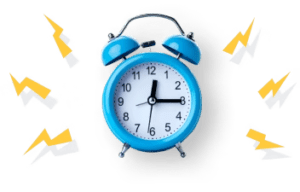Name
School of Nursing and Health Science, Capella University
NHS-FPX8040
Dr Paula Stechschulte
September, 2024
Project Charter
| Part 3 | ||||||||
| Intervention | ||||||||
| Planned Intervention | The planned intervention aims to fill up the gap that was identified in Part 1, focusing on the improvement of communications and collaboration across departments by establishing a centralized digital platform where there would be a simplified process of sharing information, task delegation, and tracking progress. This is the opposite of the current state where all communications are scattered across different channels, thus causing a protracted delay and miscommunication.The main users of the system are likely to be core members of the programs-including department heads, IT specialists, and frontline staff, to name a few who will be working daily on the platform. They will be trained on the new system. Implementation would be gradual, so first with a pilot on a few departments for pilot testing and gathering preliminary feedback before widespread rollout within the organization. The process will then involve continuous monitoring that will ensure that the adjustment is made. It would therefore mean a smooth transition for all concerned individuals. | |||||||
| Measurement: Proposed Outcomes | ||||||||
| Develop outcome, process, and counter/balancing measures for your project. | ||||||||
| Outcome Measure | Process Measure | Counter/Balancing Measure | ||||||
| Desired Outcome in Measurable Terms: The hygiene compliance rate increases from 60% to 90% within six months. Comparison with SMART Objective: The SMART objective is meeting measurable objectives concerning hygiene compliance as stated above by training the staff members and reviewing them each month. Outcome Specific and Measurable Hygiene compliance will be audited and feedback given after the intervention program. Compliance is expected to be a consistent 90% at the end of six months because of the timebound nature of this intervention, and these appraisals will continually be undertaken at appropriate intervals. | Hygiene compliance audits should follow this every month to show the adherence of staff to the new protocols and, consequently, to find areas for improvement.Follow the details when all staff have attended to hygiene standards, and all should be able to participate within the first six weeks. | Track for the decline in staff productivity as they are taking more time to embrace the new hygiene practice.Monitor for potential staff burnout or fatigue due to the extra hygiene-related tasks and resource realignment. Ensure good patient care with an improvement in hygiene but keep assessing the patients’ satisfaction and the quality of care all the time.Monitor potential unforeseen financial effects that are connected with the costs of implementing the new hygiene protocols. | ||||||
| Data Collection & Management | ||||||||
| Data CollectionWhat data will be collected? Be specific! | Data CollectorWho will collect the data? Explain their role and why this person(s) is selected. | Collection TimelineWhen will data be collected? Provide a beginning and ending time frame. | Data Storage/ProtectionHow will the data be stored?How will it be protected? Consider security, de-identification, confidentiality, and anonymity. | Diversity, Equity, and Inclusion How will the data be interpreted? Do you have any concerns about how bias might affect data collection, interpretation, or application? | ||||
| The data will cover a few main areas in order to warrant observation and review. The key ones would be the data collected on the usage of the platform, including the number of log-ins and the number of communication exchanges, besides the time taken to respond to messages. This will give a clear indication of how good the system is to the team by allowing the system to be adopted effectively. Some forms of communication metrics will be collected, especially in the times it takes to reply to a message and undertake tasks associated with the new system. Employee feedback will also be canvassed through a proper survey focusing on user satisfaction, ease of use, and whether they feel that there has been improvement over time in communications. Errors and downtime logs shall be maintained to track any technical problems on the platform, so the issues that may have occurred can be dealt with promptly for better system reliability. | A data analyst of the project will gather the data; he is an expert in dealing with, analyzing, and interpreting data. He has been selected for this position because of his very profound knowledge of the methodologies of collecting data and ensuring that it is accurate and in its integrity. The data analyst is mandated to collect usage metrics, communication patterns, and feedback from surveys. Expert knowledge in data interpretation will ensure the results and findings are relevant to the objectives of the project, thus making informed judgments for adjustments and action in case of a need. Besides, knowledge about privacy protocols ensures sensitive information has been treated with care according to policies in the organization. | In fact, the gathering of data would start right from the time of beginning the implementation of the project, which is scheduled for the first week of October. The collection of data will continue for three months and will end at the very close of the year, that is, at the end of December. On this timeline, enough data will be gathered to assess the impact of the intervention and monitor the progress. All this time, data processing will be done on a weekly basis to check if everything is correct and correct differences that may have arisen from the collection process. | All the data collected will be kept in a password-protected database that shall only be accessed by those authorized people working on the project. Personal identifiers will also be removed from the data using de-identification techniques to ensure confidentiality. Measures like these will guarantee that individual information cannot be related to any particular participant. All these will be encrypted and kept during transmission so that no one might access it improperly. To further ensure that privacy is maintained, access will be limited only to team members who reasonably need to analyze the data. Copies will be printed and kept in locked filing cabinets. | We will interpret the data through a lens that gives more importance to diversity, equity, and inclusion in order to include all aspects of the perspectives and experiences. While interpreting the findings, we won’t be actively biased. This will be achieved by involving a diverse team of analysts who come from different backgrounds and experiences, so as not to skew results unintentionally. Another strategy that we will implement is peer review in order to achieve objectivity in the analysis. We are confident in our process but still concerned about the emergence of biases that might arise from some implicit assumptions or unrecognised disparities in data collected. Ongoing training on cultural competency and bias recognition will be ensured among the team members in data collection and interpretation. | ||||
| Ethical Leadership | ||||||||
| The aim of the project is to influence a large population in specific areas that are targeted with individuals most likely to suffer from the recognized care gaps. Regarding this, the project addresses the gaps by improving outcomes and facilitating access to good quality care through enhanced patient experiences (Jesus et al., 2022). At least by any means, however, there would always be a subset of people who would probably fall through the cracks of such benefits offered. Especially those most vulnerable who might not be able to access the enhanced systems. Ethical leadership would be concerned with populations that would need to be considered at every stage of the planning and implementation phases to mitigate harm (Hertelendy et al., 2022). It is very important to include everyone, especially when such sensitive groups are at hand. People who are unintentionally omitted from consideration, given a look, or even otherwise placed outside consideration include those with less access to resources or whose voices may maybe multicultural or linguistically muted (Ogletree et al., 2020). Ethical leadership demands transparency, fairness, and intentional action to discover and abolish such barriers to ensure that all members have fair access. The leaders are expected to take actual involvement with the communities in consideration while developing and implementing the project. As a leader, drawing power to have equality is taken to an extent where a leader can make fair decisions and treat people nicely. That is, through transformational and servant leadership, the focus becomes rather drawn on empowering, hence creating an environment that brings forth collaboration as well as mutual respect between participants as well as those involved in the project, entailing the great value of well-being for the two partners involved. The project will need culturally sensitive, emotionally intelligent people who are also open to communication in order to effectively address the diverse needs of the team and the broader population it is serving. | ||||||||
| SWOT Analysis | ||||||||
| Strengths | ||||||||
| One of the strengths of the organization is the knowledge and experience base, which provides a good basis for executing the project effectively(Gottlieb et al., 2021). The organizational system contains more robust support systems from leadership within the organization and external partners, which ensure availability of necessary resources and funding. There exists an already set infrastructure and technological capability to handle and execute the project efficiently. These assets collectively place the organization in a poised position to achieve a desired positive outcome, ensuring that all issues are overcome very speedily with the organization’s focus solely on the project’s goals. | ||||||||
| Weaknesses | ||||||||
| Perhaps there may be a history of resistances to change that have in the past derailed the prospects of previous projects. This resistance might be because of low engagement as well as a non-informed understanding of the merits of the proposed changes among the employees. A factor of not having proper resources in terms of time and manpower could be the challenge, particularly if all the team members are over-tasked with their existing responsibilities. Issues can be exacerbated by ineffective communication practices, including misunderstandings and lack of collaborations between stakeholders. These may be mutually debilitating to the ongoing progress of the project and the results of desirable outcomes. | ||||||||
| Opportunities | ||||||||
| The organization possesses several strengths that are able to be leveraged into opportunities for successful project implementation. A solid base of knowledgeable staff offers the potential for innovative ideas and practices that can help move this change initiative forward. Pre-existing leadership support provides an extremely valuable platform for securing necessary resources and funding. This would engage committed stakeholders in the collaboration and build a shared ownership culture in matters of transitioning. Using recent technological advancements can also smoothen up the processes and improve communication toward a more efficient and effective project environment. All these strengths collectively support the organization’s position in embracing changes and accomplishing meaningful outcomes. | ||||||||
| Threats | ||||||||
| Potential risks that could compromise the success of the project are numerous. These include competition from other organizations outside, which would divert attention and resources away from the project, hence making it difficult to keep the stakeholder interested. Economic factors will be at risk since fluctuations may make funds not readily available at all times, thus limiting financial support to sustain the project. Other unforeseen conditions that may come up include changes in regulatory policies or healthcare standards, which demand immediate adjustments thus creating uncertainty and some disturbance in progress. Further, inability of the organization to change due to resistance by their workforce either because of unwillingness or lack of proper training renders the adoption of new practices impossible. This need further propels such threats in need of proactive strategy toward risk within the organization and guarantee the sustainability of the project. | ||||||||
| References Gottlieb, L. N., Gottlieb, B., & Bitzas, V. (2021). Creating empowering conditions for nurses with workplace autonomy and agency: How healthcare leaders could be guided by strengths-based Nursing and healthcare leadership. Journal of Healthcare Leadership, 13(13), 169–181. https://doi.org/10.2147/jhl.s221141Hertelendy, A. J., Gutberg, J., Mitchell, C., Gustavsson, M., Rapp, D., Mayo, M., & Schreeb, J. (2022). Mitigating moral distress in leaders of healthcare organizations: a scoping review. Journal of Healthcare Management, 67(5), 380–402. https://doi.org/10.1097/jhm-d-21-00263Jesus, T., Stern, B., Struhar, J., Deutsch, A., & Heinemann, A. (2022). The use of patient experience feedback in rehabilitation quality improvement and codesign activities: Scoping review of the literature. Clinical Rehabilitation, 026921552211266. https://doi.org/10.1177/02692155221126690Ogletree, A. M., Mangrum, R., Harris, Y., Gifford, D. R., Barry, R., Bergofsky, L., & Perfetto, D. (2020). Omissions of care in nursing home settings: a narrative review. Journal of the American Medical Directors Association, 21(5), 604-614.e6. https://doi.org/10.1016/j.jamda.2020.02.016 | ||||||||
Views: 4








